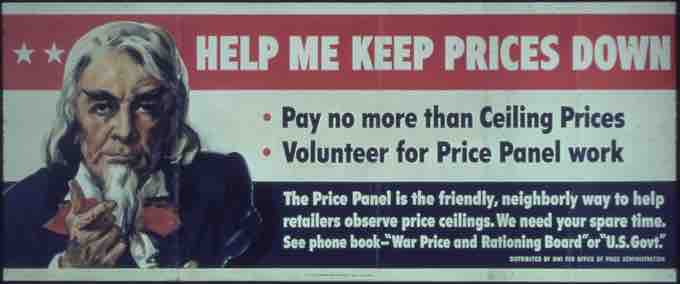A price ceiling is a price control that limits the maximum price that can be charged for a product or service. Generally ceilings are set by governments, although groups that manage exchanges can set ceilings as well. The purpose of a price ceiling is to protect consumers of a certain good or service. By establishing a minimum price, a government wants to ensure the good is affordable for as many consumers as possible .

US Poster for Price Ceilings
Governments often impose price ceilings in times of war to ensure goods are available to as many people as possible.
An example of a price ceiling is rent control. These regulations require a more gradual increase in rent prices than what the market may demand. This regulation is meant to protect current tenants. Without rent control, there could be situations where the demand for housing in an area could cause rent prices to make a substantial jump. Unable to afford the new, significantly higher rent, a majority of the neighborhood's tenants may be forced to move out of the neighborhood. Rent controls limit the possibility of tenant displacement by minimizing the amount by which rent can be increased.
By definition, however, price ceilings disrupt the market. By setting a maximum price, any market in which the equilibrium price is above the price ceiling is inefficient. There will be excess demand because the price cannot increase enough to clear the excess.
For a price ceiling to be effective, it must be less than the free-market equilibrium price. This is the price established through competition such that the amount of goods or services sought by buyers is equal to the amount of goods or services produced by sellers. It is also the price that the market will naturally set for a given good or service. If the price ceiling is higher than what the market would already charge, the regulation would not be effective. As a result, a government will do significant research into the current market conditions for a good before setting a price ceiling.